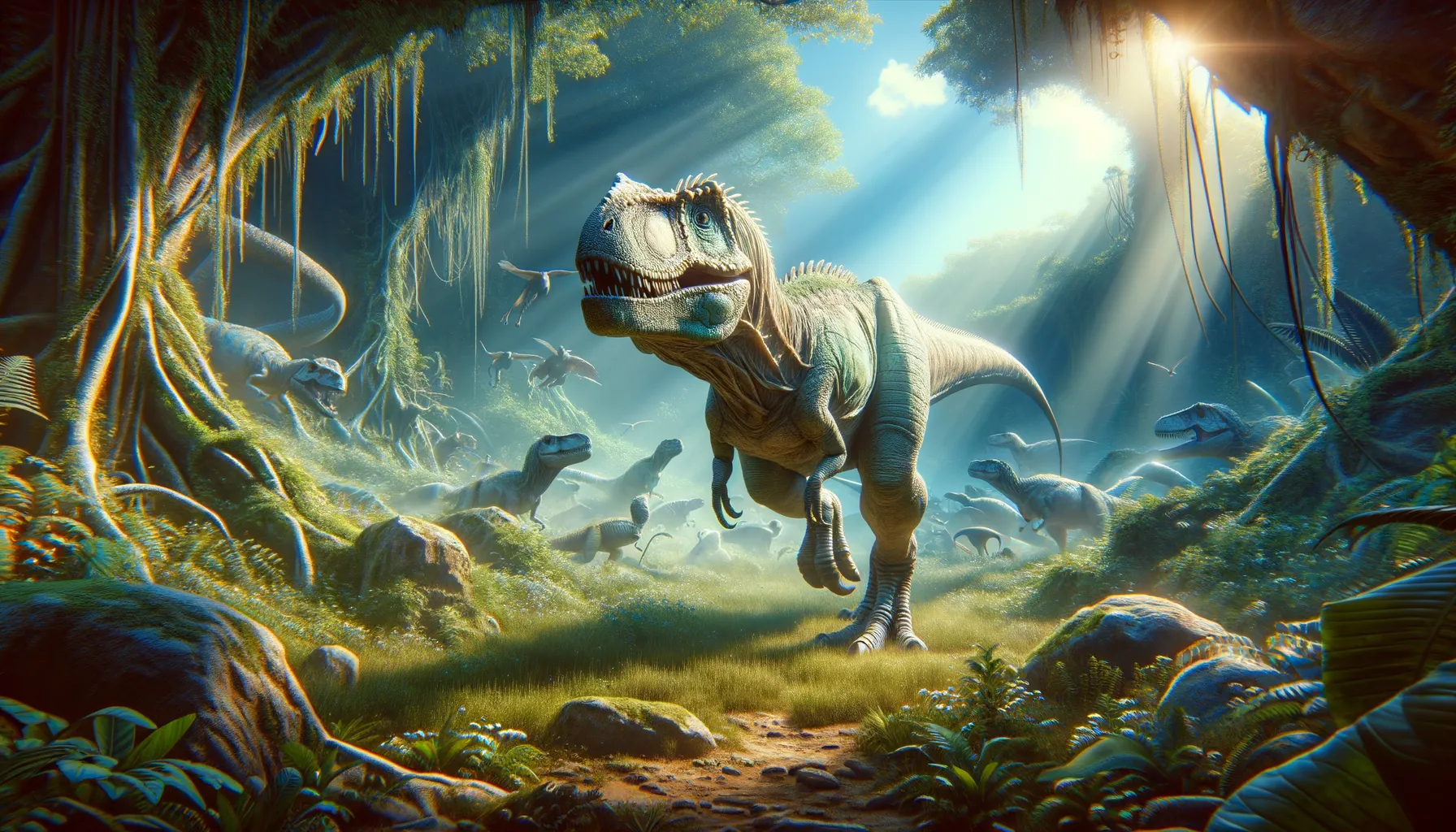
Anoplosaurus
A gently armored giant of the past.
Period
Cretaceous
Length
Approximately 5 meters long.
Height
Stood about 1 meter tall at the hips.
Weight
Estimated around 500 kg.
Anoplosaurus was a medium-sized, quadrupedal dinosaur that roamed during the Cretaceous Period. With a body covered presumably in light armor, it belonged to a group of dinosaurs known as nodosaurids, though less heavily armored than some of its relatives. Its exact body plan is not fully clear, but adaptations suggest it was well-suited to a herbivorous lifestyle, grinding plants with its leaf-shaped teeth.
Diet
Anoplosaurus primarily consumed a herbivorous diet, feeding on the abundant plant life in its environment. Its teeth were well-adapted to grind leaves and other vegetation. This type of diet helped sustain its large body size and provided essential nutrients.
Hunting
As a herbivore, Anoplosaurus did not hunt prey. It likely spent much of its time grazing on low-lying plant material. Its daily activities would have revolved around finding suitable vegetation and ensuring it had enough to eat.
Environmental challenges
Anoplosaurus faced several environmental challenges, including predation by large carnivorous dinosaurs. Its armor provided some protection, but it largely relied on hiding and living in dense vegetation to evade predators. Climate changes during its period could also result in food scarcity, pushing it to new areas in search of resources.
Speed
Relatively slow-moving.
Lifespan
Potentially several decades.
First discovery
Discovered in England in the late 19th century.
Fun Facts
- Anoplosaurus was a small dinosaur that lived during the late Cretaceous period, about 100 million years ago.
- Unlike many of its relatives, Anoplosaurus did not have armor plates along its body, which is unusual for its group.
- The name Anoplosaurus means 'unarmored lizard', highlighting its distinct lack of armor compared to other similar dinosaurs.
- Anoplosaurus was a herbivore, meaning it likely fed on plants and vegetation in its habitat.
- Fossils of Anoplosaurus have primarily been found in Europe, specifically in regions that are now parts of England.
- This dinosaur is known from very few fossil remains, making it one of the more mysterious dinosaurs studied by paleontologists.
- Anoplosaurus was relatively small for a dinosaur, with scientists estimating it to be about 4 meters (13 feet) long.
Growth and Development
Like many dinosaurs, Anoplosaurus likely grew rapidly in its early years to reach a size that reduced predation risks. Once it reached maturity, its growth would have slowed down, conserving energy for reproduction and survival. Its development included the strengthening of its skeletal structure and possibly some degree of social behavior formation.
Habitat
Anoplosaurus lived in a variety of environments ranging from forested areas to open plains. These areas provided ample food sources and natural cover from predators. Seasonal changes might have driven the dinosaur to migrate short distances to accommodate shifts in food availability.
Interaction with other species
Anoplosaurus coexisted with a range of other dinosaur species, including potential predators and other herbivores. Its interactions would have varied from avoidance of carnivores to possibly displaying defensive behaviors. Relationships with other herbivores might have centered around competition or group grazing dynamics.
Natural lifespan
Anoplosaurus could naturally live for several decades if it survived predation and environmental hurdles.
Reproduction
Anoplosaurus, like other dinosaurs, probably laid eggs in clutches. Nesting behavior might have involved selecting safe, concealed sites to reduce predation risk. Parental care is speculative, but some attention may have been given to protect eggs from environmental threats.
Social behaviour
While specific to Anoplosaurus is not well-documented, some degree of herd behavior may have existed. Group living could enhance protection and reproductive success. Social interactions might have been structured around foraging and protecting juveniles.
Fossil locations
Fossils of Anoplosaurus have been found primarily in England, providing insights into its structure and lifestyle. These discoveries help paleontologists understand the species' distribution and environment. The rarity of finds makes precise characterizations challenging.
